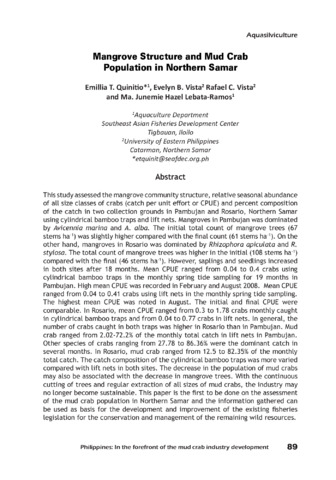Effect of some vertebrate and invertebrate hormones on the population growth, mictic female production, and body size of the marine rotifer Brachionus plicatilis Müller
- Global styles
- MLA
- Vancouver
- Elsevier - Harvard
- APA
- Help

View/Open
Date
1997Page views
1,366ASFA keyword
AGROVOC keyword
Metadata
Perlihat publikasi penuhCited times in Scopus
- Citations
- CrossRef - Citation Indexes: 54
- Scopus - Citation Indexes: 80
- Captures
- Mendeley - Readers: 17
Share
Abstract
Eight vertebrate and invertebrate hormones were screened for their effect on population growth, mictic female production, and body size of the marine rotifer Brachionus plicatilis. Growth hormone (GH) or human chorionic gonadotropin (HCG) at 0.0025-25 I.U. ml-1 and estradio1-17β (E2), triiodothyronine (T3), 20-hydroxyecdysone (20-HE), 5-hydroxytryptamine(5-HT), gamma-aminobutyric acid (GABA) or juvenile hormone (JH) at 0.05-50 mg l-1 were added to 5-ml of Nannochloropsis oculata suspension (7 x 106 cells ml-1). From an initial density of 1 individual ml-1, rotifers were cultured with hormones for 48 hours in 22 ppt seawater at 25 °C, in darkness. Rotifers were counted and classified into female types and transferred to a new algal food suspension without hormone every other day until day 8 when body size was measured. Population growth was significantly higher in treatments exposed to GABA (50 mg l-1), GH (0.0025 and 0.025 I.U. ml-1), HCG (0.25 and 2.5 I.U. ml-1), and 5-HT (5 mg l-1). E2 caused a decrease in population growth, whereas JH, 20HE, and T3 had no effect. Mictic female production was significantly higher at 0.05 and 0.5 mg l-1 JH and 0.05 and 5 mg l- 5HT. GH (0.0025 and 0.025 I.U. ml-1), E2 (50 mg l-1 ), GABA (0.5, 5 and 50 mg l-1), and 20-HE (0.05 mg l-1) treatments had significantly higher mictic female production only on day 8, 6, 4, and 6, respectively. T3 and hCG had no effect on mictic female production. Lorica length increased by 9.6% and 4.4% in rotifers treated with JH (0.05 mg l-1) and GABA (5 mg l-1), respectively. Correspondingly, lorica width increased by 8.9% and 2.6% in these treatments. In comparison, 20-HE-, T3-, and HCG-treated rotifers were smaller (3.9-8.2%) and GH, 5-HT and E2 had no effect on rotifer body size.
Suggested Citation
Gallardo, W. G., Hagiwara, A., Tomita, Y., Soyano, K., & Snell, T. W. (1997). Effect of some vertebrate and invertebrate hormones on the population growth, mictic female production, and body size of the marine rotifer Brachionus plicatilis Müller. Hydrobiologia , 358(1-3), 113-120. https://doi.org/10.1023/A:1003124205002
Type
ArticleISSN
0018-8158Koleksi
- Journal Articles [1247]
Related items
Showing items related by title, author, creator and subject.
-
Mangroves as mud crab habitats
The paper reports the use of mangroves by Scylla species both as wild and culture habitats. Based on published literature, natural mangrove crab populations are described in terms of population density, dispersal and ... -
Mangrove structure and mud crab population in northern Samar
Quinitio, Emilia T. ; Vista, Evelyn B.; Vista, Rafael C.; Lebata-Ramos, Ma. Junemie Hazel
; Vista, Evelyn B.; Vista, Rafael C.; Lebata-Ramos, Ma. Junemie Hazel  (Aquaculture Department, Southeast Asian Fisheries Development Center, 2017)
This study assessed the mangrove community structure, relative seasonal abundance of all size classes of crabs (catch per unit effort or CPUE) and percent composition of the catch in two collection grounds in Pambujan and ...
(Aquaculture Department, Southeast Asian Fisheries Development Center, 2017)
This study assessed the mangrove community structure, relative seasonal abundance of all size classes of crabs (catch per unit effort or CPUE) and percent composition of the catch in two collection grounds in Pambujan and ... -
Transport of hatchery-reared and wild grouper larvae, Epinephelus sp.
Estudillo, Chona B.; Duray, Marietta N. (Elsevier, 2003)Optimum packing conditions for the transport of hatchery-reared and wild grouper larvae were investigated under simulated condition or actual air transport. Simulation of transport motion was done through the use of an ...2121 Total citations2 Recent citations1.58 Field Citation Ration/a Relative Citation Ratio





